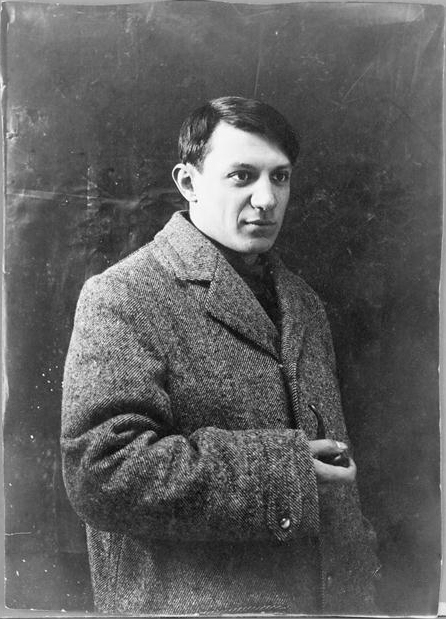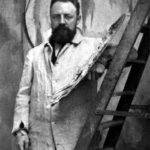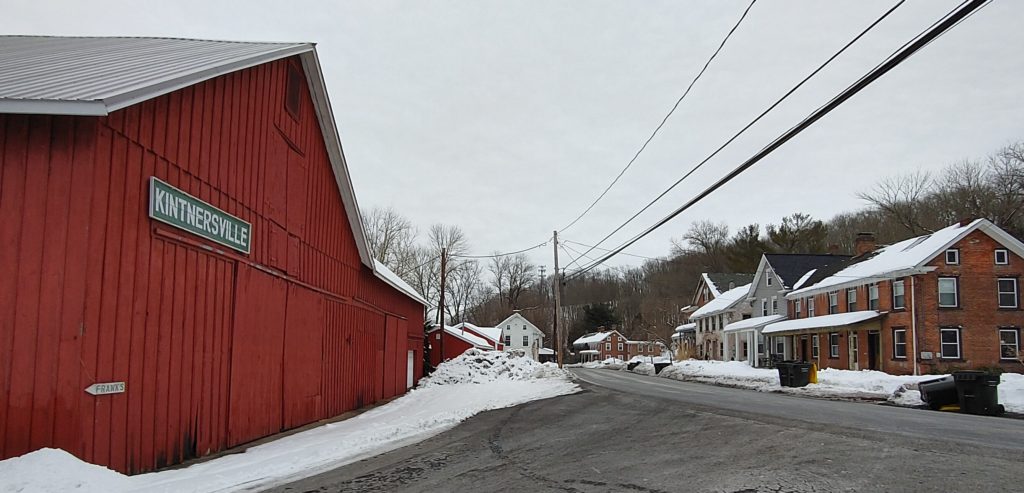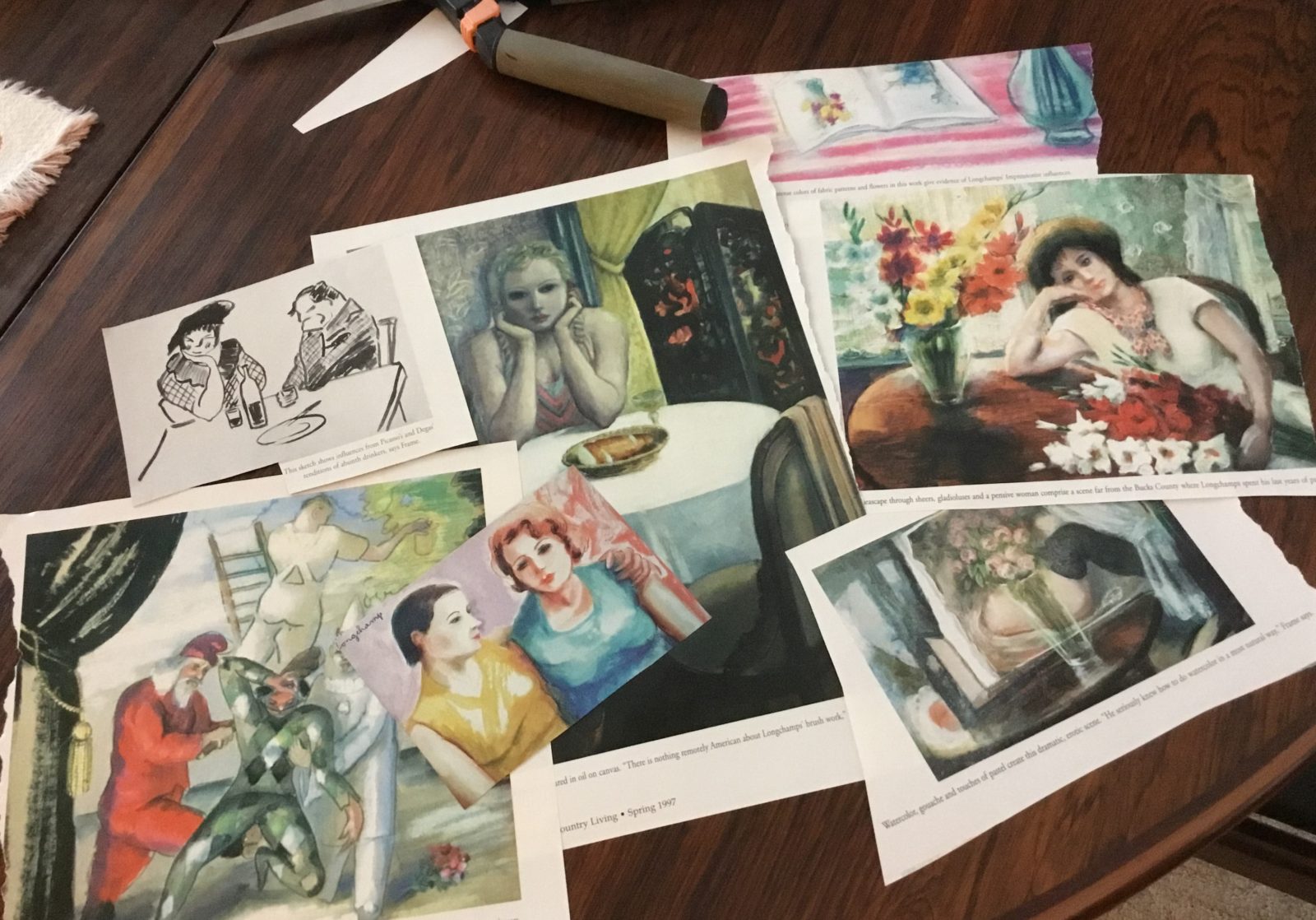The reclusive Upper Bucks expressionist led a storied life.
I dream of having a friend like artist Gaston Longchamp. To have received one of his illustrative letters like those preserved at the Smithsonian Institution in Washington would have been a treasure. Gaston learned his craft in Paris at the foot of Georges Seurat, Pierre-Auguste Renoir, Paul Signac, Claude Monet, Henri Matisse, Marc Chagall, Raoll Duffy, Pablo Picasso and many others.
It was stunning to me to learn recently the expressionist painter called Kintnersville in Upper Bucks his home for more than 40 years. All the while he produced prolific works of art that remained concealed. You could make a good case he should be ranked among Bucks’ great artists. Why he isn’t is a mystery to me.
Fernand “Gaston” Longchamp was born in 1894 in Amsterdam, N.Y. to a Cayga-Iroquois decorator infuriated by the U.S. Army’s 1890 massacre of Sioux Indians at Wounded Knee in South Dakota. So he emigrated with his French wife and baby to Paris where they led a Bohemian lifestyle intertwined with aspiring young artists. Friends regularly gathered at a dining table under the Longchamp garden arbor to discuss politics, the sciences and art. Gaston,7, would hide under the table, eavesdropping. As he recalled in 1969, “When the mood was joyful, painters, musicians and poets were sure to be the majority. Some of them were extravagant enough to wear sandals barefooted. Today I could draw the feet of Paul Napoleon Rainard just as I can smell the perfumes of the ladies present.”


As an apprentice to his dad, young Gaston often bicycled to Renoir’s home to clean his brushes and watch him paint. He also began drawing the human figure, normally his mom with her cats and dogs. By age 14, he painted alongside artists Dufy, Matisse and Georges Braque. At 17, he worked with Picasso painting stage designs for the Russian ballet and with Chagall for Igor Stravinsky’s “Firebird” ballet. He described idle hours filled with “impromptu concerts and musicals, wine parties and bus trips to the Left Bank, and everyone was painting.”
At the urging of friends in the 1920s, he relocated to New York to pursue modern art. On arrival, he was in demand doing set designs on Broadway. His yearning, however, was success as an oil painter. That proved to be difficult since galleries controlled the market. Gaston tried interior design for wealthy art patrons but soon regretted surrendering artistic independence to them. “I was fed up,” he told a reporter. “I wanted to get away from the art colonies of Woodstock and Greenwich Village. I did not want to exhibit in galleries, nor play the game of art. All I wanted to do was paint in peace.”
His wife Ouida found the perfect place: Kintnersville.
Founded in the 1700s, it once was a prosperous mill town where River Road meets Route 611 on the old stagecoach line from Philadelphia to Easton. By the 1860s, the village contained 20 homes, a store, hotel, lumber factory and large grist mill. With the town in decline in 1940, the couple moved into a vintage farmhouse with studio space on Gallows Hill Road.

By then Gaston was a nationally-known set designer for theaters, ballet and the Metropolitan Opera and commuted seasonally to the city. But out of the public eye in Kintnersville, he painted with abandon for decades in styles reminiscent of Monet, Renoir and Picasso. Portraits of Marc Chagall and Picasso’s friend Apollinaire, rural landscapes, disaffected youth and café scenes were his subjects.
On moving to Kintnersville, Gaston befriended local brothers Paul and Clarence Berger. They took him camping. Around campfires they cooked fish netted in Gallows Run and discussed life endlessly. The Bergers taught him to play Blind Man’s Bluff. On his first try, Gaston wrapped his arms around a tree and declared, “Caught!”
In the mid-1970s the artist retired as a set designer and turned to painting full-time at home the rest of his life. Looking back at his long career, he expressed admiration of the “starving artist” tradition born in Paris. “The Left Bank bohemians had no practical function within the established social pattern, and considered doing anything outside their art blasphemous,” he recalled. “They filled their bellies or starved together, sharing and sharing alike.”
Gaston Longchamp, whose wife died in 1955, passed away in 1986 at age 92 at home. Nearly forgotten, he was surrounded by more than 400 of his works never exhibited. Today they are the source of international gallery exhibitions and command high prices at auction. Among those astounded by the collection found inside his home after the artist’s passing was David Frame of Doylestown’s Frame Art Gallery. “This is like nothing else Bucks County has ever seen,” he gushed. “You had a serious French impressionist living in Bucks County.”
Attention Michener Art Museum.
***
Sources include “Bucks Artist Reflects on Glory That Was Paris” by Gretchen Ewing published on Feb. 25, 1969 in The Morning Call of Allentown; “Two Kintnersville Gentlemen” by Charles Herrmann published by the Durham Historical Society in 2002; and “The Rediscovery of Gaston Longchamp” by Lisa Coffman published in the Spring 1997 issue of Bucks County Town & Country Living magazine. Thanks also to friend Wynne Wert for alerting me to the story of Gaston Longchamp and helping in the research..

